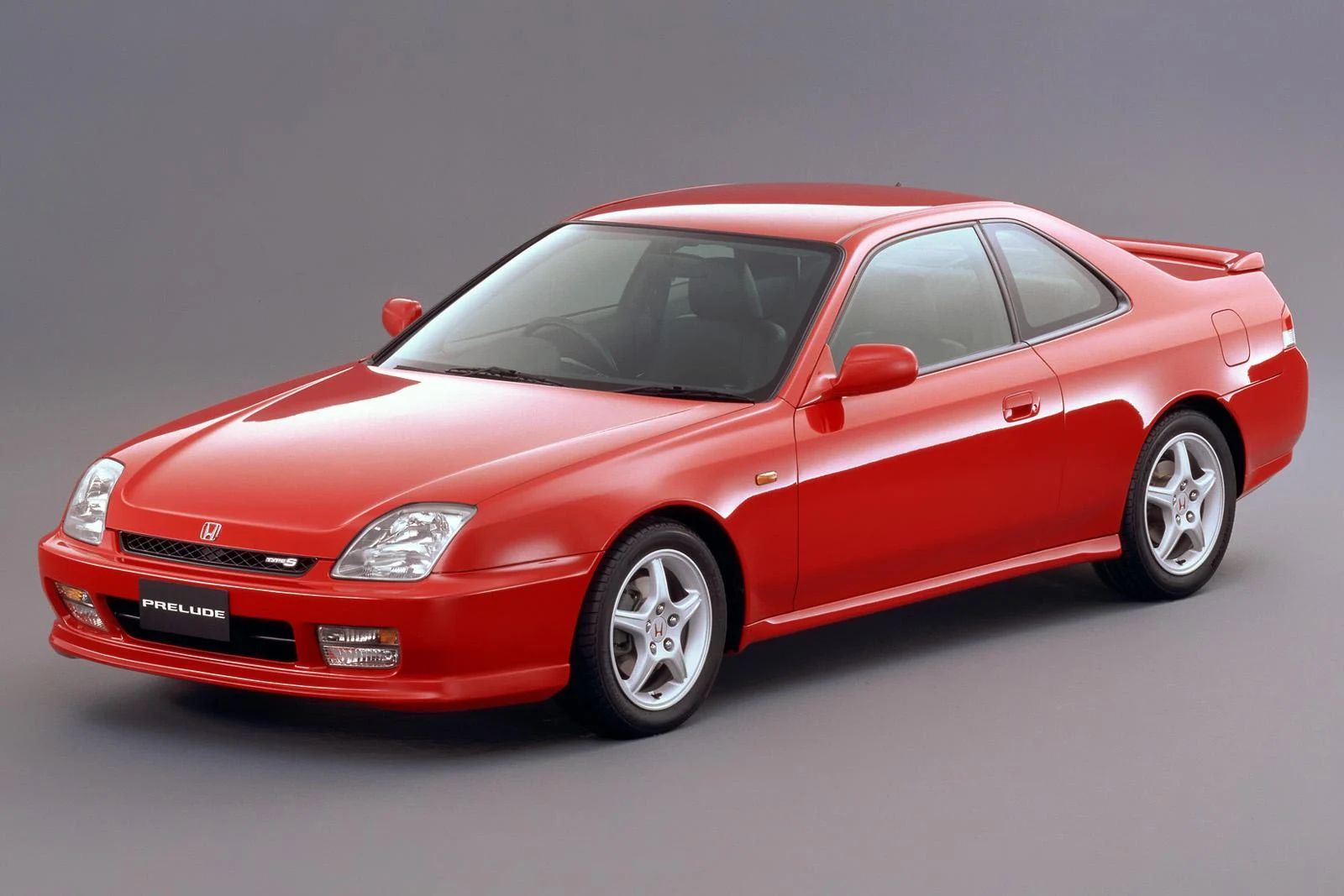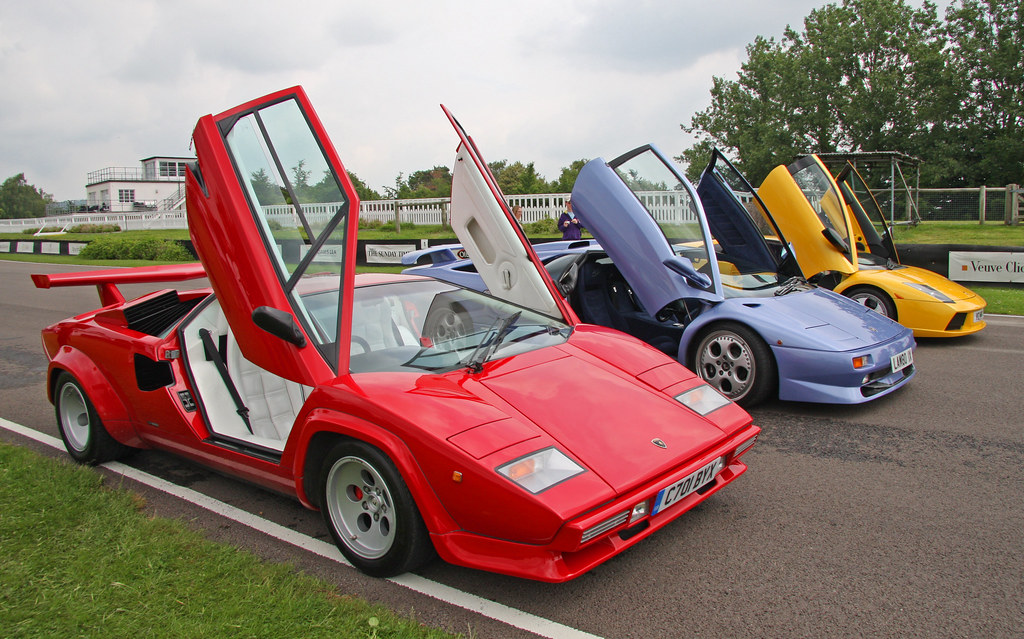
The automotive landscape is undergoing a profound transformation, with established luxury models, once celebrated for their engineering prowess and distinctive styling, now quietly receding from the market. This shift is not merely an incidental change but a strategic pivot by manufacturers responding to evolving consumer preferences, stringent environmental regulations, and the undeniable march towards electrification. For enthusiasts and industry observers alike, this period marks a significant realignment, where timeless designs and powerful combustion engines are increasingly making way for sustainable, tech-forward alternatives.
Many luxury car models we know and love are quietly slipping out of production, a trend that speaks volumes about the industry’s future direction. As global trends accelerate toward electric and eco-friendly vehicles, some iconic luxury cars are being phased out to make room for this new era. This comprehensive analysis will explore a selection of these distinguished vehicles, dissecting the reasons behind their departure and reflecting on what their absence signifies for the luxury segment.
Whether one is a devotee of timeless designs, a connoisseur of classic engineering, or simply an astute observer of market dynamics, understanding these shifts is crucial. These models represent more than just vehicles; they are the last of their kind, encapsulating an era of automotive excellence that is gradually concluding. Their impending or recent discontinuation underscores a broader industry narrative, one where innovation and adaptation are paramount, even at the cost of beloved, long-standing icons.
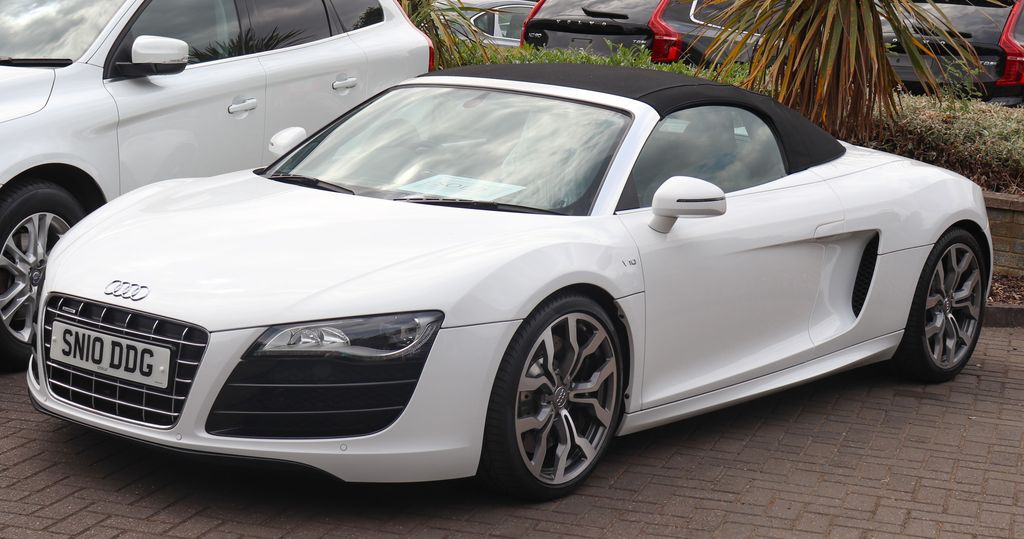
1. **Audi R8**The Audi R8, distinguished by its thrilling V10 engine and sleek supercar design, has long held a prominent position in the luxury sports car market. Its raw power and unmistakable aesthetics made it a favorite, embodying the pinnacle of Audi’s performance engineering. The R8’s high-revving engine, capable of producing an impressive 602 horsepower, combined with its iconic all-wheel-drive system, delivered an exhilarating driving experience that was virtually unmatched in its segment.
However, the R8’s gas-powered engine now finds itself at odds with Audi’s ambitious green initiatives and overarching transition to electric models. This internal conflict between heritage performance and future sustainability has rendered the R8’s future bleak. Its impending discontinuation is not just the end of a single model; it marks the conclusion of an era for Audi’s performance lineup, as the brand commits to pivoting toward more sustainable, electrified alternatives.
The R8’s departure underscores a critical trend in the luxury sports car sector: the increasing incompatibility of traditional, large-displacement combustion engines with modern environmental mandates and corporate sustainability goals. While its legacy as a formidable supercar will undoubtedly endure, its exit symbolizes the industry’s firm commitment to an electrified future, even if it means bidding farewell to beloved gas-guzzling legends. It’s a testament to the fact that even the most celebrated gasoline engines are succumbing to the electric revolution.
Car Model Information: 2011 Audi R8 4.2 quattro
Caption: Audi R8 V10 Plus (Type 4S)
Manufacturer: Audi
Production: June 2006 – March 2024,(45,949 Units)
Class: Sports car
BodyStyle: coupé
Layout: Longitudinal engine,Mid-engine design,rear-wheel-drive
Sp: uk
ModelYears: 2007–2024
Categories: 2010s cars, 2020s cars, All articles with unsourced statements, Articles with short description, Articles with unsourced statements from March 2019
Summary: The Audi R8 is a mid-engine, 2-seater sports car, which uses Audi’s trademark quattro permanent all-wheel drive system. It was introduced by the German car manufacturer Audi AG in 2006. Production ended in the first quarter of 2024.
The car is exclusively designed, developed, and manufactured by Audi AG’s private subsidiary company manufacturing high performance automotive parts, Audi Sport GmbH (formerly quattro GmbH), and is based on the Lamborghini Gallardo and presently the Huracán platform. The fundamental construction of the R8 is based on the Audi Space Frame, and uses an aluminium monocoque which is built using space frame principles. The car is built by Audi Sport GmbH in a newly renovated factory at Audi’s ‘aluminium site’ at Neckarsulm in Germany. At the time it was introduced in 2006, the R8 became the first production car with full-LED headlamps.
Get more information about: Audi R8
Buying a high-performing used car >>>
Brand: Audi Model: R8
Price: $67,995 Mileage: 44,740 mi.
Read more about: This Is How You Live Your Best Life for a Century (Or More!): 14 Celebs Who Rocked Their 90s & 100s Like Absolute Legends!
2. **Mercedes-Benz S-Class Coupe and Cabriolet**The Mercedes-Benz S-Class Coupe and Cabriolet have long epitomized the zenith of Mercedes-Benz luxury, offering a blend of powerful engines, sophisticated technology, and interiors that exuded unparalleled refinement. These two-door variants of the flagship S-Class sedan represented a commitment to opulent comfort and dynamic performance, making them icons in their own right within the luxury segment. They were, in essence, grand statements of automotive elegance and engineering.
Despite their significant appeal and status as luxury benchmarks, these exquisite models are slated for discontinuation. This decision is part of Mercedes-Benz’s strategic realignment, as the company intensifies its focus on all-electric offerings within its luxury portfolio. Equipped with robust V8 engines, advanced suspension systems, and the latest in automotive technology, the S-Class Coupe and Cabriolet have consistently delivered on their promise of comfort and performance, captivating a discerning clientele.
Their phase-out signals a profound shift in focus for Mercedes-Benz, indicating a move away from less popular body styles to make substantial room for an entirely electrified lineup. This strategic recalibration reflects not only a response to market trends but also a proactive step towards a future where luxury is increasingly defined by sustainable and technologically advanced electric propulsion. The discontinuation of these opulent two-doors highlights the inexorable push towards an electric, emissions-free luxury experience.
Car Model Information: 2019 Volvo XC90 T6 Inscription
Name: Mercedes-Benz S-Class
Manufacturer: ubl
Production: 1954–present (S-Class nomenclature adopted since 1972)
Class: Full-size luxury car
BodyStyle: Sedan (car)
Related: Mercedes-Benz CL-Class,Mercedes-Benz CLS-Class,Mercedes-Benz SL-Class
Predecessor: Mercedes-Benz W187
Categories: 1980s cars, 1990s cars, 2000s cars, 2010s cars, 2020s cars
Summary: The Mercedes-Benz S-Class, formerly known as “special class” (German: “Sonderklasse”, abbreviated as “S-Klasse”), is a series of full-sized luxury sedans and coupés produced by the German automaker Mercedes-Benz. The S-Class is the designation for top-of-the-line Mercedes-Benz models and was officially introduced in 1972 with the W116, and has remained in use ever since. The S-Class is the flagship vehicle for Mercedes-Benz, being positioned above the other Mercedes-Benz models.
The S-Class has debuted many of the company’s latest innovations, including drivetrain technologies, interior features, and safety systems (such as the first seatbelt pretensioners). The S-Class has ranked as the world’s best-selling luxury sedan. In automotive terms, Sonderklasse refers to “a specially outfitted car.” Although used colloquially for decades, following its official application in 1972, six generations of officially named S-Klasse sedans have been produced.
In 1981, the two-door, four-seat S-Class, designated as SEC, was introduced, sharing the petrol V8 engines with its four-door version, W126. After the introduction of a new nomenclature scheme, SEC was simply renamed as S-Class Coupé. For the 1996 model year, the coupé was separated from the S-Class line and named as new CL-Class (in line with other two-door models: CLK, SL, and SLK); however, the CL-Class was reintegrated into the S-Class model line (same with CLK becoming E-Class Coupé and Cabriolet). The first-ever S-Class convertible since 1972, internally named A217, was introduced and became a one-generation model only. After the end of W222 production in 2020, the successors to the C217 coupé and A217 convertible are not planned, citing the low demand for those models and stronger demand for SUV models.
Get more information about: Mercedes-Benz S-Class
Buying a high-performing used car >>>
Brand: Mercedes-Benz Model: S-Class Coupe and Cabriolet
Price: $28,859 Mileage: 43,261 mi.
Read more about: 12 Luxury Sedans That Redefine Performance and Efficiency: Exceeding 35 MPGe Combined
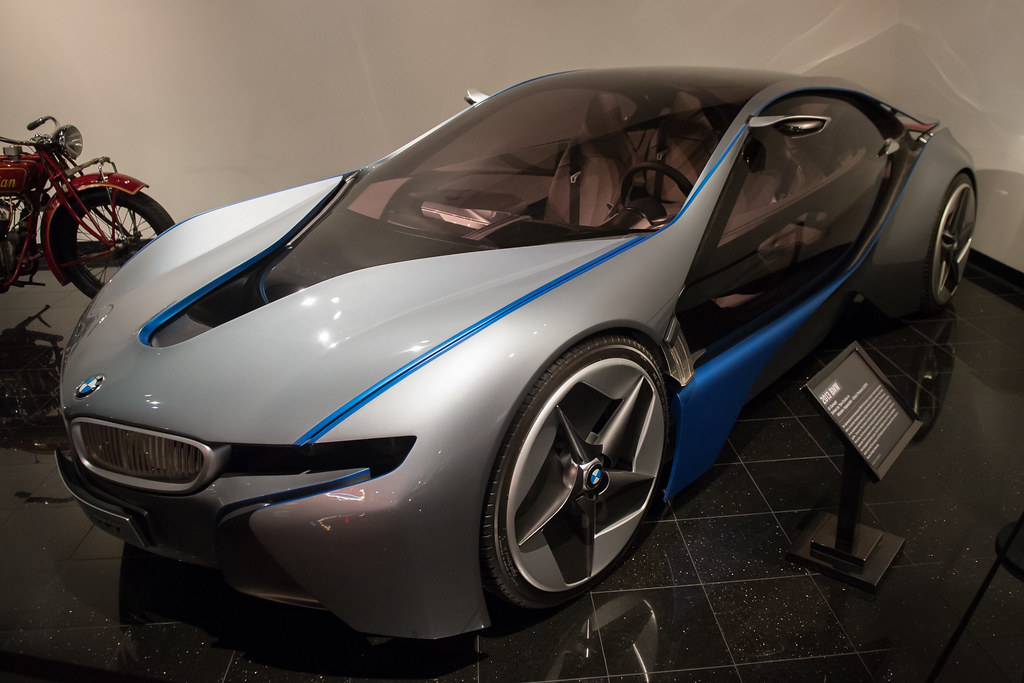
3. **BMW i8**The BMW i8, a truly revolutionary plug-in hybrid sports car, concluded its production run, leaving a distinctive void in BMW’s high-performance lineup. From its inception, the i8 was lauded for its strikingly futuristic design, which often appeared to be plucked directly from a science fiction movie, and its innovative lightweight carbon-fiber construction. It was a vehicle that dared to push the boundaries of what a sports car could be, blending performance with environmental consciousness.
At its heart, the i8 featured a sophisticated hybrid powertrain, combining a modest three-cylinder engine with an electric motor to produce a combined 369 horsepower. While not a brute force supercar, this setup was groundbreaking, effectively setting a crucial stage for BMW’s subsequent journey into an electric future. The i8 was a trailblazer, demonstrating that thrilling performance could coexist with hybrid efficiency, thereby redefining expectations for luxury sports cars.
However, with BMW’s current, intensified focus on developing and launching a comprehensive range of all-electric models, such as the prominent i4, the i8’s pioneering hybrid technology no longer holds the flagship position it once did. It stands as a memorable, yet now retired, icon—a testament to BMW’s willingness to innovate and experiment, even as its own technological advancements eventually supersede its earlier achievements. The i8’s legacy is defined by its role as a pivotal stepping stone toward full electrification.
Car Model Information: 2016 BMW i8 Base
Name: BMW i8 (I12/I15)
Manufacturer: BMW
Production: April 2014 – June 2020 , (20,465 units)
Assembly: Saxony,Leipzig
Predecessor: BMW ActiveE
Successor: BMW 8 Series (G15),BMW M8
Class: Sports car
BodyStyle: coupé
Layout: Transverse engine,mid-engine,all-wheel-drive
Motor: 131 hp
Order: EPA
Abbr: on
Engine: turbocharged,I3 engine
Battery: kWh,lithium-ion battery
Transmission: Aisin,AWTF-80 SC
Drivetrain: Plug-in hybrid
Wheelbase: Convert
Length: Convert
Width: Convert
Height: Convert
Weight: Convert
Range: 500 km
ElectricRange: 37 km
Related: BMW i3
Designer: Vision EfficientDynamics
Doors: Butterfly doors
Powerout: 369 hp
ModelYears: 2014–2020
Categories: All articles containing potentially dated statements, All articles that are excessively detailed, All articles with style issues, Articles containing potentially dated statements from October 2016, Articles containing potentially dated statements from September 2016
Summary: The BMW i8 is a plug-in hybrid sports car developed by BMW. The i8 was part of BMW’s electrified fleet and was marketed under the BMW i sub-brand. The production version of the BMW i8 was unveiled at the 2013 Frankfurt Motor Show and was released in Germany in June 2014. Deliveries to retail customers in the U.S. began in August 2014. A roadster variant was launched in May 2018. Production ended in June 2020.
The 2015 BMW i8 accelerated from 0 to 100 km/h (62 mph) in 4.4 seconds and had an electronically limited top speed of 250 km/h (155 mph). The 2015 model year i8 had a 7.1-kWh lithium-ion battery pack that delivered an all-electric range of 37 km (23 mi) under the New European Driving Cycle. Under the U.S. EPA cycle, the range in EV mode was 24 km (15 mi). The battery capacity of both the BMW i8 Roadster and the i8 Coupe was increased to 11.6 kWh in 2018, allowing the NEDC electric range to rise to 55 km (34 mi) for the coupé and 53 km (33 mi) for the roadster.
The BMW i8 coupé had a fuel efficiency of 2.1 L/100 km (134.5 mpg‑imp; 112.0 mpg‑US) under the NEDC test with carbon emissions of 49 g/km. The EPA rated the i8 combined fuel economy at 76 MPGe (2.1 L gasoline-equivalent/100 km; 91 mpg-imp gasoline-equivalent) and 29 miles per gallon (6.7L/100 km) when running in pure gasoline mode.
Get more information about: BMW i8
Buying a high-performing used car >>>
Brand: BMW Model: i8
Price: $49,999 Mileage: 57,285 mi.
Read more about: Buyer’s Remorse on the Highway: 11 Sports Cars That Left Owners Wishing for a Do-Over
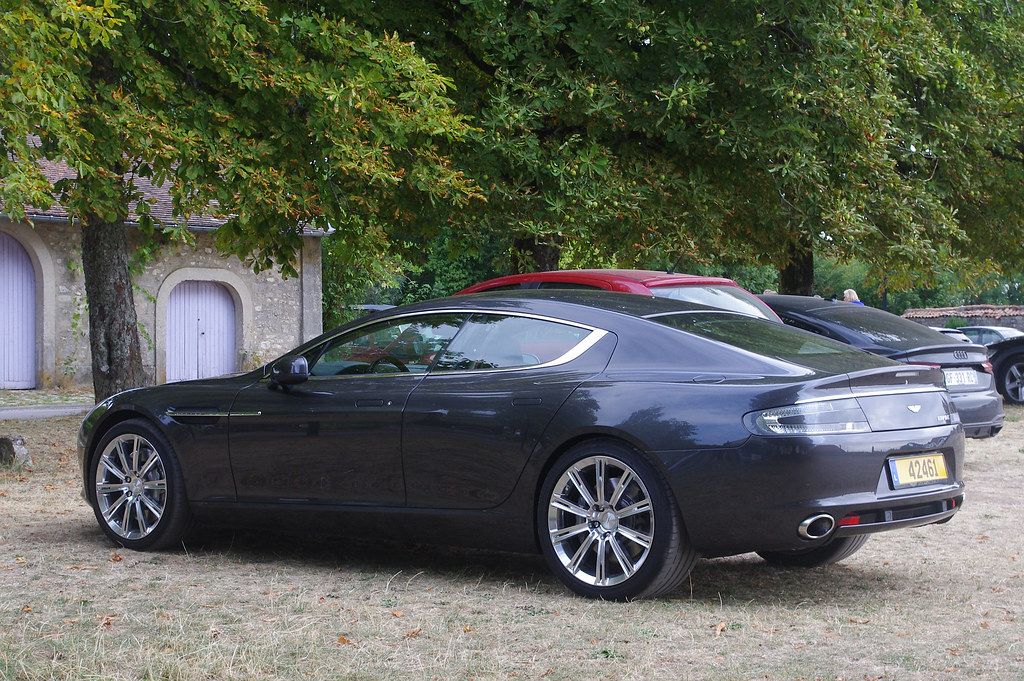
4. **Aston Martin Rapide**The Aston Martin Rapide, a luxurious four-door sedan, has found itself on the cusp of discontinuation, largely influenced by the company’s strategic reorientation towards more commercially viable SUV models and an burgeoning portfolio of electric vehicles. This elegant sedan, powered by a robust V12 engine, exemplified classic British styling and sophisticated performance, serving as a distinctive staple within Aston Martin’s prestigious lineup for many years. It was a unique offering for those who desired sports car dynamics with enhanced practicality.
Despite its inherent charm and the allure of its V12 powerplant, the demand for traditional four-door sports cars has been visibly waning in recent times. Concurrently, Aston Martin has recalibrated its corporate focus, channeling significant resources into the development and promotion of SUVs, notably the highly successful DBX, and its ongoing electric vehicle initiatives. This broader market shift has undeniably impacted the viability of models like the Rapide.
The retirement of the Rapide will create a palpable gap for aficionados of classic, high-powered sedans, especially those who cherish the unique combination of Aston Martin’s design language and the visceral experience of a V12 engine. Its departure signifies a concession to prevailing market trends, where luxury automakers, even those steeped in tradition, must adapt their offerings to remain competitive and relevant in an increasingly SUV-dominated and electric-driven automotive landscape.
Car Model Information: 2019 Volvo XC90 T6 Inscription
Name: Aston Martin Rapide
Caption: 2014 Aston Martin Rapide S
Alt: A 2014 Rapide S V12 in a light silver
Manufacturer: Aston Martin
Designer: Marek Reichman
Production: 2010–2020
Assembly: Graz,Gaydon, Warwickshire
BodyStyle: liftback
Doors: Swan doors
Class: Executive car
Layout: Front mid-engine, rear-wheel drive layout,Rear-motor, rear-wheel-drive
Platform: Aston Martin VH platform
Related: Aston Martin DB9,Aston Martin Virage,Aston Martin Vanquish (2012),Aston Martin Rapide Bertone Jet 2+2,Lagonda Taraf
Engine: Aston Martin V12 engine,V12 engine
Transmission: ZF 6HP transmission#6HP 26
Battery: kWh,Lithium-ion battery
Wheelbase: 117.7 in
Abbr: on
Order: flip
Length: 197.6 in
Width: 75.9 in
Height: 53.5 in
Weight: convert
Sp: uk
Categories: 2010s cars, All Wikipedia articles written in British English, Articles with hAudio microformats, Articles with short description, Aston Martin vehicles
Summary: The Aston Martin Rapide ( rə-PEED) is an executive saloon car that was produced by the British carmaker Aston Martin from 2010 until 2020. Aston Martin began development of the Rapide in 2005 as the company’s first series produced four-door automobile. The initial design was completed in about seven weeks by Marek Reichman. After more than four months of development, a prototype was completed and displayed at the 2006 North American International Auto Show. The production version of the Rapide debuted at the 2009 International Motor Show Germany, and manufacture began in May 2010 at the Magna Steyr facility in Graz, Austria.
The “vertical/horizontal” (VH) platform, which the Rapide uses, extensively incorporates aluminium throughout the body, reducing weight. In 2012, Aston Martin ended its partnership with Magna Steyr and shifted production to Gaydon, a Warwickshire village where the other VH platformed cars—including the DB9, the DBS, the Vantage and the second-generation Vanquish—were produced. In 2015, Aston Martin debuted an electric concept version, the Rapide E. The production-ready model debuted in 2019 but was never series-produced.
Get more information about: Aston Martin Rapide
Buying a high-performing used car >>>
Brand: Aston Martin Model: Rapide
Price: $28,859 Mileage: 43,261 mi.
Read more about: Beyond the 911: 10 Thrilling Sports Cars That Deliver Porsche-Level Performance for Less
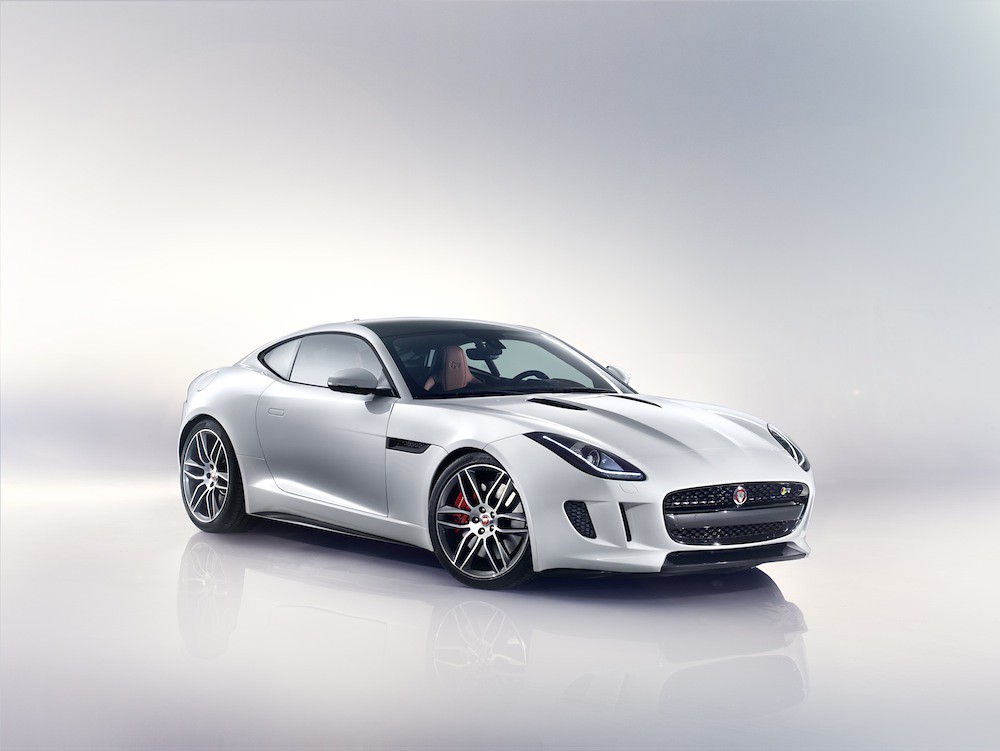
5. **Jaguar F-Type**The Jaguar F-Type, recognized for its muscular design and the thrilling roar of its V8 engine, is on the precipice of retirement as Jaguar boldly declares its intention to transition to an all-electric lineup by 2025. This move underscores a monumental shift in the brand’s identity, signaling an end to an era of gas-powered performance that has long defined the marque. The F-Type, with its agile handling, sleek aesthetics, and impressive power delivery, has been a perennial favorite among sports car enthusiasts, embodying the quintessential British sports car spirit.
However, the F-Type’s combustion engine, a source of much admiration, no longer aligns with Jaguar’s aggressive sustainability goals and its unwavering commitment to an electrified future. This strategic dissonance is a primary driver behind its impending discontinuation. The brand’s ambitious target to go fully electric means that models relying on gasoline power, no matter how iconic, are being systematically phased out to make way for the new paradigm.
The possible discontinuation of the F-Type is far more than just the removal of a model from the lineup; it marks the definitive end of Jaguar’s high-powered combustion engine era. It is a pivotal moment that paves the way for a completely new generation of all-electric models, promising a future of sustainable luxury and performance. This transition, while perhaps bittersweet for traditionalists, highlights Jaguar’s determination to innovate and lead in the evolving automotive ecosystem.
Car Model Information: 2015 Jaguar F-TYPE R
Name: Jaguar F-Type (X152)
Caption: Jaguar F-Type R-Dynamic coupé
Manufacturer: Jaguar Land Rover
ModelCode: X152
Aka: Lister LFT
Production: 2013–2024
ModelYears: 2014–2024
Assembly: Birmingham,England
Designer: Ian Callum,César Pieri (Project 7)
Class: Sport car
BodyStyle: unbulleted list
Platform: Jaguar Land Rover car platforms#D6a
Related: Jaguar C-X16
Layout: Front-engine, rear-wheel-drive layout
Engine: ubl
Powerout: ubl
Abbr: on
Transmission: ubl
Wheelbase: Convert
Length: 4470 mm
Width: 1923 mm
Height: 1308 mm
Weight: convert
Sp: uk
Predecessor: Jaguar XK
Categories: All Wikipedia articles written in British English, All articles with failed verification, All articles with unsourced statements, Articles with failed verification from April 2025, Articles with short description
Summary: The Jaguar F-Type (X152) is a series of two-door, two-seater sports cars manufactured by British car manufacturer Jaguar Land Rover under their Jaguar Cars marque from 2013 to 2024. The car’s JLR D6a platform is based on a shortened version of the XK’s platform. It is the so-called “spiritual successor” to the E-Type.
The car was launched initially as a 2-door soft-top convertible, with a 2-door fastback coupé version launched in 2013. The F-Type underwent a facelift for the 2021 model year. It was unveiled in December 2019, featuring a significantly restyled front end and dashboard, and simplified drivetrain options. Jaguar announced that the F-Type will be discontinued after the 2024 model year. Production ended in June 2024, by which time 87,731 examples had been built.
Get more information about: Jaguar F-Type
Buying a high-performing used car >>>
Brand: Jaguar Model: F-Type
Price: $47,591 Mileage: 15,327 mi.
Read more about: Navigating the Automotive Minefield: A Consumer Reports Guide to 10 Vehicles with Notoriously High Repair Costs

6. **Lexus LC Convertible**The Lexus LC Convertible stands out as a genuinely eye-catching luxury sports car, distinguished by its striking design and the refined power of its 5.0-liter V8 engine. It represents a pinnacle of Lexus’s commitment to sophisticated luxury and engaging driving experiences. The LC Convertible is particularly renowned for its exceptional build quality, meticulously crafted luxurious interior, and a remarkably smooth ride that provides a top-down driving experience that is genuinely difficult to surpass, blending exhilaration with serene comfort.
Despite these considerable merits, the LC Convertible faces an uncertain future, with its discontinuation being a distinct possibility as Lexus undertakes a strategic realignment of its product lineup. This corporate pivot sees the brand focusing increasingly on the burgeoning SUV segment and expanding its range of hybrid vehicles, reflecting broader market shifts towards more versatile and eco-conscious options. The emphasis is moving away from niche, high-performance coupes and convertibles.
As Lexus meticulously re-evaluates and streamlines its offerings, this elegant convertible, despite its allure, may simply not find a suitable place in its future plans. The decision to potentially phase out such a distinctive model highlights the challenges faced by niche luxury vehicles in a market increasingly dominated by practical SUVs and economically driven hybrid powertrains. It’s a clear indication that even models lauded for their exquisite design and driving pleasure are not immune to sweeping industry changes.
Car Model Information: 2019 Volvo XC90 T6 Inscription
Name: Lexus LC
Caption: Lexus LC 500 (URZ100)
Manufacturer: Toyota
ModelCode: Z100
Production: March 2017 – present
ModelYears: 2018–present
Assembly: Toyota City
Designer: Edward Lee (LF-LC concept),Tadao Mori (chief designer),Pansoo Kwon (production exterior: 2013)
Class: Grand tourer
BodyStyle: unbulleted list
Layout: Front-engine, rear-wheel-drive
Platform: Toyota TNGA-L platform
Related: Lexus LS (XF50)
Engine: unbulleted list
Motor: 132 kW
Abbr: on
Powerout: unbulleted list
Transmission: unbulleted list
Drivetrain: Hybrid vehicle drivetrain#Parallel hybrid
Wheelbase: 2870 mm
Length: convert
Width: 1920 mm
Height: convert
Weight: convert
Predecessor: Lexus SC
Categories: 2+2 coupés, 2020s cars, Articles containing Japanese-language text, Articles with short description, Cars introduced in 2017
Summary: The Lexus LC is a grand tourer manufactured by Lexus, a luxury division of Toyota. Based on the 2012 LF-LC Concept, it was revealed at the 2016 North American International Auto Show in Detroit. It replaced the SC, which was produced from 1991 to 2010. The LC is the first Lexus model to utilize the GA-L platform, which, along with other components, is shared with the full-size XF50 series LS sedan. According to Lexus, the name “LC” stands for “Luxury Coupe”.
Get more information about: Lexus LC
Buying a high-performing used car >>>
Brand: Lexus Model: LC Convertible
Price: $28,859 Mileage: 43,261 mi.
Read more about: Navigating the Automotive Minefield: A Consumer Reports Guide to 10 Vehicles with Notoriously High Repair Costs
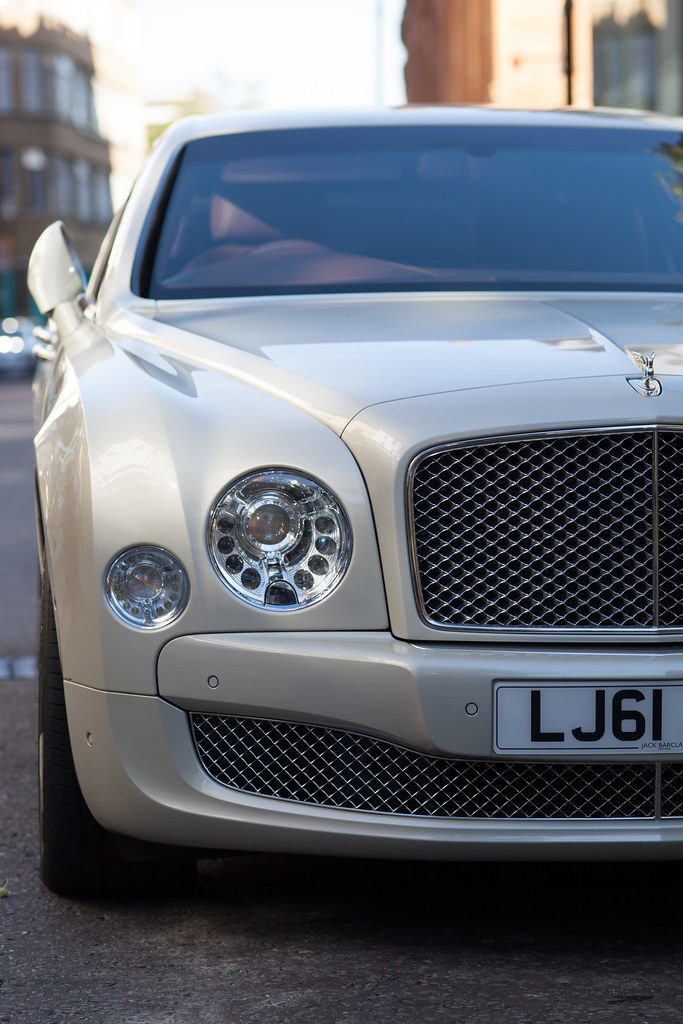
7. **Bentley Mulsanne**Bentley’s Mulsanne, a truly monumental staple of British luxury, was officially discontinued in 2020, leaving a profound void for enthusiasts of full-size, ultra-luxury sedans. This vehicle was not merely a mode of transport; it was a testament to unparalleled craftsmanship and automotive artistry. With its hand-built 6.75-liter V8 engine—an engine so significant it became known as the “6¾-litre”—and an interior that epitomized opulence, the Mulsanne represented the absolute zenith of Bentley’s artisanal capabilities and bespoke luxury.
The decision to cease production of the Mulsanne was not taken lightly but reflected Bentley’s unwavering commitment to a new corporate focus on sustainability. This move aligns with the broader industry-wide transition towards hybrid and fully electric vehicles, indicating a strategic shift to adapt to future market demands and environmental mandates. The Mulsanne’s formidable presence and traditional, gas-guzzling powertrain became increasingly incompatible with Bentley’s forward-looking green agenda.
The Mulsanne’s dignified exit from the lineup serves as a stark illustration of the luxury market’s broader evolution. It highlights a clear transition away from traditionally massive, combustion-powered sedans towards modern, technologically advanced vehicles that often incorporate hybrid or electric propulsion. Its discontinuation marks the end of an era for a specific kind of old-world luxury, paving the way for a new generation of Bentley vehicles that blend heritage with cutting-edge sustainable technology.
Car Model Information: 2016 Bentley Mulsanne Base
Name: Bentley Mulsanne
Manufacturer: Bentley Motors
Production: March 2010 – June 2020
ModelYears: 2011–2020
Assembly: Crewe
Designer: Dirk van Braeckel
Class: Full-size,luxury car
BodyStyle: Sedan (automobile)
Layout: Front-engine, rear-wheel-drive layout
Engine: twin-turbocharged,Rolls-Royce–Bentley L-series V8 engine
Transmission: ZF 8HP
Wheelbase: 3266 mm
Abbr: on (EWB)
Length: 5575 mm
Width: Convert
Height: 1521 mm
Weight: cvt,convert
Predecessor: Bentley Arnage
Sp: uk
Categories: All Wikipedia articles written in British English, Articles with short description, Bentley vehicles, CS1 errors: bare URL, CS1 errors: missing title
Summary: The Bentley Mulsanne is a full-size luxury car that was manufactured and marketed by British automaker Bentley Motors from March 2010 to June 2020. It served as the flagship automobile for the company during its production run. Honorifically, the Mulsanne was referred to as “The Grand Bentley” during its development.
Replacing the Rolls-Royce-based Arnage, the Mulsanne was Bentley’s first independently-built automobile since the 8 Litre, which W. O. Bentley conceived. Unveiled initially at the Pebble Beach Concours d’Elegance, the Mulsanne retained two key elements from the Arnage—rear-wheel drive with the front axle centerline optimally positioned forward, and a 6.75-litre push-rod V8 engine equipped with twin-turbochargers. The individualistic headlamps were designed to resemble those of the Jaguar S-Type from the 1960s. Throughout its ten-year manufacturing period, Bentley produced approximately 7,900 examples at the Crewe facility. The Mulsanne has generally been well received, with Jeremy Clarkson claiming that the ride is quiet and the torques were great while criticising the number of switches and the fact that it was less “tasteful” than a Rolls-Royce Ghost.
In 2005, development work on the Mulsanne officially commenced under the codename “Project Kimberley”, the name of which was inspired by the Kimberley diamond originating from South Africa. Styled by Belgian automobile designer Dirk van Braeckel, the Mulsanne is a four-door sedan which was offered in two body lengths: short- and extended-wheelbase. Incorporating various internal and external elements from the Arnage, it employs a blend of high-strength steel and lightweight aluminium. The team that assembles the Mulsanne is composed of 298 Bentley employees. The interior was designed under the direction of British automobile designer Robin Page, who also led that of the second-generation Continental GT. Each individual unit undergoes a meticulous process that takes 400 hours (2 weeks), of which 136 hours (five days) are dedicated to interior trimming.
Production of the Mulsanne concluded on 25 June 2020, signifying not only the end of its ten-year manufacture but also the end of Bentley’s 6¾-litre engine after a consecutive 61-year production period. The 6¾-litre V8 engine, introduced in 1959 and heavily revised and updated in 2010, could not be updated any further to meet the increasingly stringent emission regulations, namely CO2 emissions. No replacement for either Mulsanne or 6¾-litre V8 engine is planned. Instead, the third generation Flying Spur would succeed the Mulsanne as Bentley’s flagship model.
Get more information about: Bentley Mulsanne (2010)
Buying a high-performing used car >>>
Brand: Bentley Model: Mulsanne
Price: $92,500 Mileage: 28,725 mi.
Read more about: Beyond the Pitch: David Beckham’s Coveted 1o-Car Collection — A Masterclass in Automotive Luxury and Style
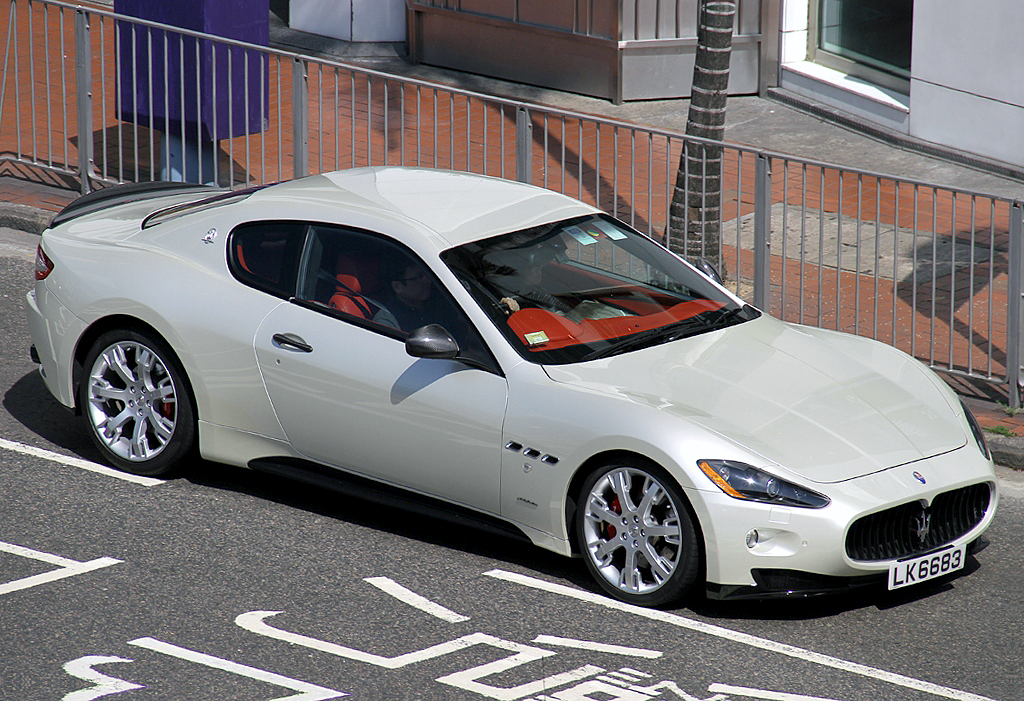
8. **Maserati GranTurismo**The Maserati GranTurismo, with its timeless Italian design and robust V8 engine, has long been revered as a quintessential grand tourer, offering an exhilarating blend of performance and elegance. Its distinctive styling and the emotive soundtrack of its engine have captivated enthusiasts for years, solidifying its place as a beloved icon in the luxury sports car segment. This model embodied a unique segment of Maserati’s heritage, combining a potent powertrain with a luxurious, comfortable cabin designed for extended, spirited journeys. Its presence on the road was always unmistakable, a testament to Italian automotive artistry.
However, the automotive landscape is rapidly modernizing, and Maserati is actively reconfiguring its lineup to align with the industry’s significant pivot toward electrification. This strategic realignment necessitates the phasing out of traditional combustion-engine models to make way for a new generation of vehicles. The GranTurismo is directly impacted by this shift, as it is being succeeded by electrified alternatives, most notably the upcoming GranTurismo Folgore, which promises a new era of performance delivered through electric propulsion.
The retirement of the V8-powered GranTurismo marks a pivotal moment for Maserati, symbolizing the definitive end of a long-standing legacy for its internal combustion engine performance vehicles. While enthusiasts may lament the departure of its characteristic engine note, its discontinuation underscores the brand’s unwavering commitment to innovation and sustainability, embracing an electrified future to remain competitive and relevant in the evolving luxury automotive market.
Car Model Information: 2012 Maserati GranTurismo MC
Name: Maserati GranTurismo,Maserati GranCabrio
Manufacturer: Maserati
Production: 2007 – December 2019 (40,520 produced),April 2023 – present
ModelYears: 2008–2019,2023–present
Class: Grand tourer
BodyStyle: 2+2 (car body style),coupé
Predecessor: Maserati Coupé
Categories: 2010s cars, All articles lacking reliable references, All articles with unsourced statements, Articles lacking reliable references from October 2024, Articles with hAudio microformats
Summary: The Maserati GranTurismo and GranCabrio are a series of grand tourers produced by the Italian manufacturer Maserati, succeeding the Maserati Coupé and Spyder.
The first generation GranTurismo (M145) was introduced at the 2007 Geneva Motor Show and was produced from 2007 to December 2019. It set a record for the fastest development of a car, going from design to production in just nine months. The model featured a 4.2-litre V8 engine initially, which was later upgraded to a 4.7-liter engine in the GranTurismo S variant. The GranTurismo MC, a racing version developed for the FIA GT4 European Cup, and the GranTurismo MC Sport Line, a customisation programme, were also part of the lineup.
The GranTurismo Sport, introduced in 2012, replaced the GranTurismo S and featured a revised 4.7-litre engine. The GranTurismo MC Stradale, unveiled in 2010, is a more track-focused version inspired by a race variant. The GranCabrio convertible version was unveiled at the 2009 Frankfurt Motor Show and produced from 2010 to 2019. The GranCabrio Sport was introduced in 2011 and the GranCabrio MC was launched in 2013, the latter featuring improved aerodynamics and a light bump in power.
The second generation, GranTurismo II (M189), was revealed in 2022 and began production in April 2023. It offers three models: Modena, Trofeo, and Folgore (electric). Based on the Giorgio Sport platform, petrol engined models feature a newly-developed 3.0-litre Nettuno twin-turbocharged V6 engine, with the Trofeo variant being the most powerful at 550 PS (405 kW; 542 hp). The Folgore model is a battery electric version with a range of 450 km (279.6 mi).
Get more information about: Maserati GranTurismo
Buying a high-performing used car >>>
Brand: Maserati Model: GranTurismo
Price: $39,999 Mileage: 24,295 mi.
Read more about: Expert Insights: Luxury Cars You’ll Regret Buying Due to Hidden Costs and Reliability Issues
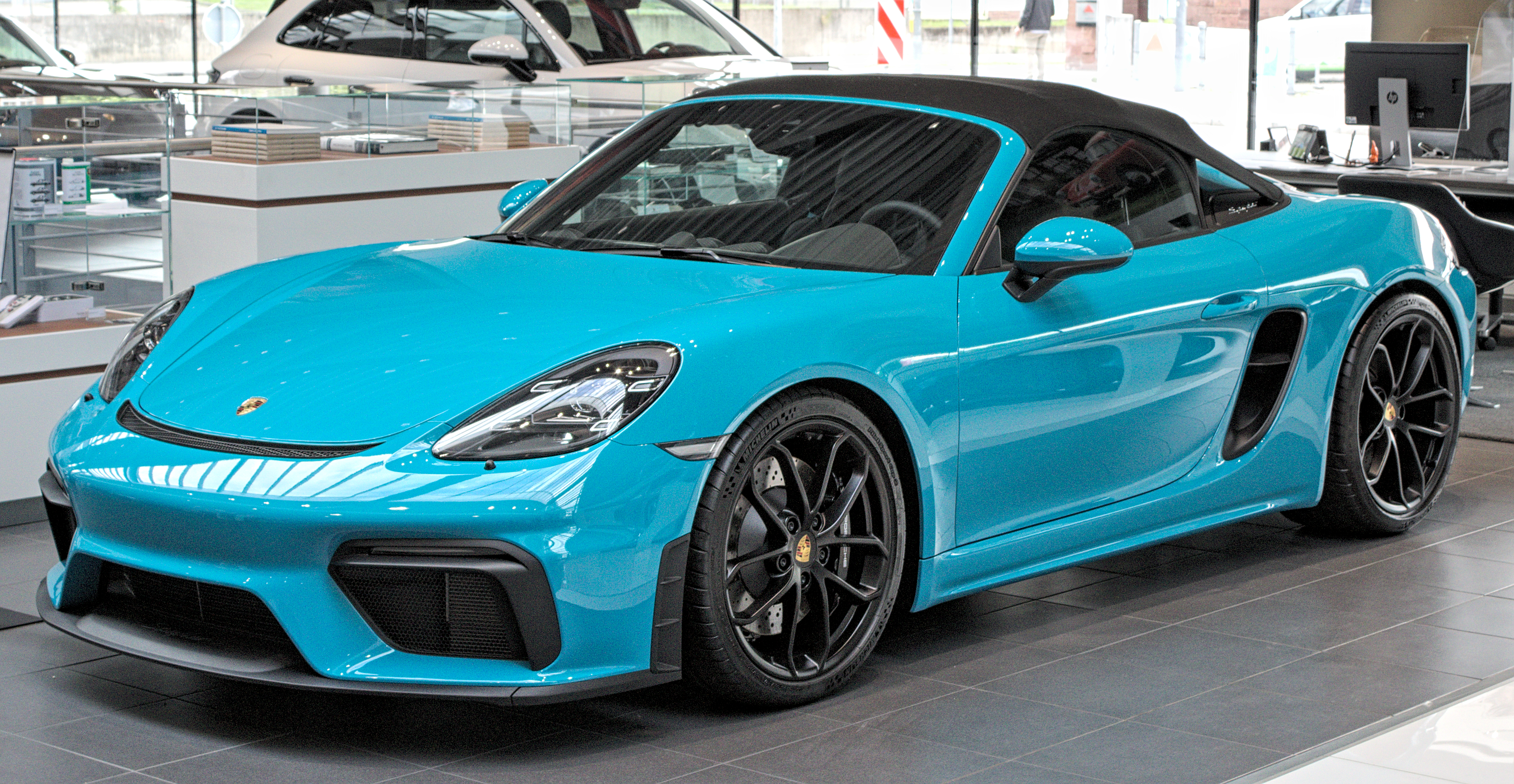
9. **Porsche 718 Cayman/Boxster**Porsche’s 718 Cayman and Boxster models have consistently been celebrated as the benchmarks for mid-engine sports cars, distinguished by their incredibly precise handling, compact and perfectly balanced designs, and remarkably potent engines. These attributes have made them perennial favorites among Porsche purists and driving enthusiasts who prioritize a visceral, engaging driving experience. Their ability to deliver accessible performance with Porsche’s signature engineering prowess has ensured their enduring popularity in a competitive market segment.
Amidst the industry’s widespread move towards electrification, there are strong indications and rumors that the 718 Cayman and Boxster series may soon transition to an all-electric platform. Porsche has articulated ambitious plans for electrification across its portfolio, and this strategic imperative suggests a significant shift for the 718 line, potentially reimagining these iconic sports cars with electric powertrains. Such a transformation would represent a fundamental change to their driving character, moving away from the internal combustion engines that have defined them for decades.
The potential discontinuation of their gasoline-powered variants highlights Porsche’s steadfast commitment to its overarching sustainable mission. While this decision undoubtedly presents a challenging emotional transition for traditionalists, it also reaffirms Porsche’s dedication to leading innovation, even if it means evolving core models like the 718 series. This move reflects the broader trend of high-performance vehicles adapting to new environmental standards and consumer expectations, ensuring a future for Porsche’s sports car lineage in an electrified world.
Car Model Information: 2019 Volvo XC90 T6 Inscription
Name: unbulleted list
Caption: Porsche Boxster Spyder (718)
Manufacturer: Porsche
Aka: unbulleted list
Production: unbulleted list
Assembly: unbulleted list
Class: Sports car
BodyStyle: unbulleted list
Related: unbulleted list
Layout: Rear mid-engine, rear-wheel drive layout
Predecessor: Porsche 968
Categories: All Wikipedia articles written in British English, All articles needing additional references, All articles with dead external links, All articles with unsourced statements, Articles needing additional references from August 2025
Summary: The Porsche Boxster and Cayman are mid-engine two-seater sports cars manufactured and marketed by German automobile manufacturer Porsche across four generations—as a two-door, two-seater roadster (Boxster) and a three-door, two-seater fastback coupé (Cayman).
The first generation Boxster was introduced in 1996; the second generation Boxster and the Cayman arrived in late 2005; and the third generation launched in 2012. Since the introduction of the fourth generation in 2016, the two models have been marketed as the Porsche 718 Boxster and Porsche 718 Cayman.
The nameplate Boxster is a portmanteau of boxer, a reference to its flat or boxer engine, and Speedster, a nod to the original Porsche Speedster of the 1950’s. The nameplate Cayman is an alternative spelling of caiman, a member of the alligator family.
In May 2025 Porsche North America confirmed the rumours that global “production for all current 718 Boxster and 718 Cayman variants, including RS models, is scheduled to end in October of” 2025. Porsche CEO Oliver Blume has confirmed future production of full-electric replacements but said they will arrive in the “medium term.”
Get more information about: Porsche Boxster and Cayman
Buying a high-performing used car >>>
Brand: Porsche Model: 718 Cayman/Boxster
Price: $28,859 Mileage: 43,261 mi.
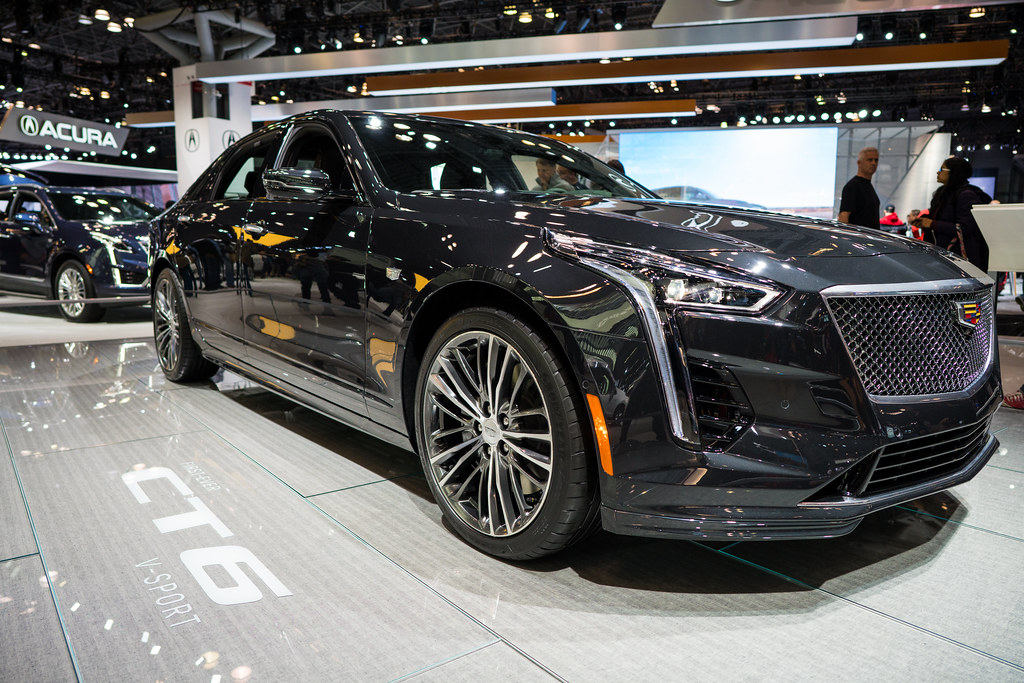
10. **Cadillac CT6**The Cadillac CT6, a distinguished full-size luxury sedan, represented Cadillac’s commitment to offering a powerful, spacious, and technologically advanced vehicle for discerning North American buyers. With its impressive engine lineup and an interior designed for both comfort and cutting-edge features, the CT6 was specifically crafted to appeal to enthusiasts of premium sedans. It aimed to challenge established European rivals by offering a distinctive American interpretation of luxury and performance, providing a refined driving experience combined with significant road presence.
However, the North American automotive market has witnessed a significant and sustained shift in consumer preference, with a pronounced migration from traditional sedans to more versatile SUVs and crossovers. This evolving market dynamic, coupled with Cadillac’s broader corporate strategy to aggressively pivot towards electric and utility vehicles, ultimately led to the discontinuation of the CT6 in the region. The brand recognized the need to reallocate resources to segments experiencing higher demand and aligning with its future vision.
This decision to retire the CT6 is more than just a model adjustment; it serves as a clear illustration of a pervasive industry trend. Luxury automakers, even those with a strong sedan heritage, are increasingly prioritizing SUVs and new electric vehicle architectures over traditional luxury sedans. The CT6’s exit underscores how market forces and strategic recalibrations are fundamentally reshaping product portfolios across the luxury segment, making room for vehicles that better meet contemporary consumer desires for practicality, space, and electrified powertrains.
Car Model Information: 2018 Cadillac CT6 3.0L Twin Turbo Platinum
Name: Cadillac CT6
Manufacturer: General Motors
Production: January 2016–present
ModelYears: 2016–2020 (North America),2016–present (China)
Class: Full-size,luxury car
BodyStyle: Sedan (car)
Sp: us
Successor: Cadillac Celestiq
Categories: 2010s cars, 2020s cars, All-wheel-drive vehicles, Articles with Chinese-language sources (zh), Articles with short description
Summary: The Cadillac CT6 (short for Cadillac Touring 6) is a full-size luxury car manufactured by Cadillac between 2016 and 2020 over two generations. The first generation CT6 was introduced at the 2015 New York International Auto Show and went on sale in the U.S. in March 2016. It is the first car to adopt the brand’s revised naming strategy, as well as the first rear-wheel drive full-size Cadillac sedan since the Fleetwood was discontinued in 1996.
In 2020, the CT6 was discontinued in the United States, to be replaced by the forthcoming Cadillac Celestiq liftback sedan.
Get more information about: Cadillac CT6
Buying a high-performing used car >>>
Brand: Cadillac Model: CT6
Price: Not Priced Mileage: 59,119 mi.
Read more about: Unpacking Autonomy: A Consumer’s Guide to Leading Self-Driving Systems
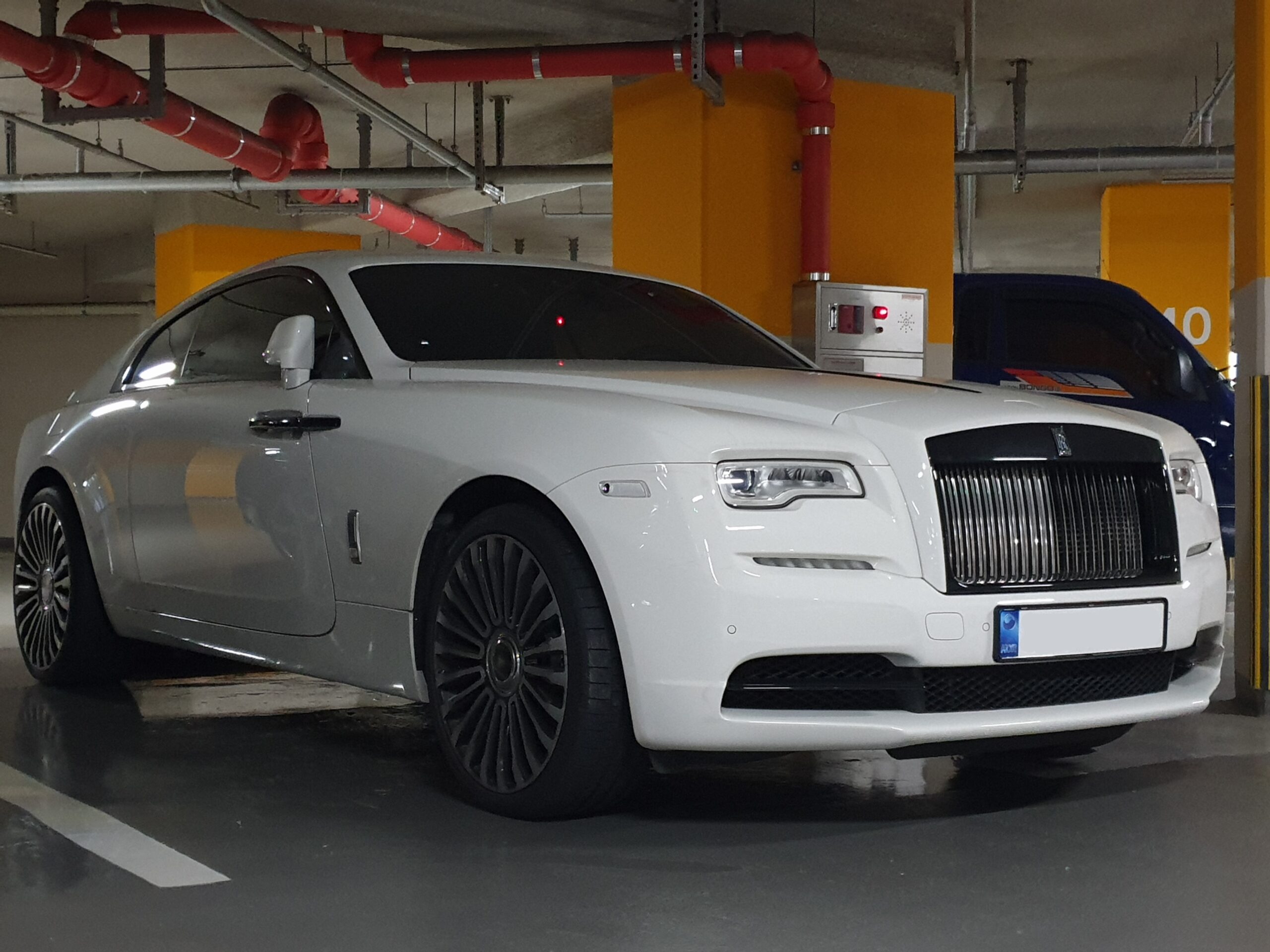
11. **Rolls-Royce Wraith**The Rolls-Royce Wraith, with its imposing fastback design, formidable V12 engine, and an interior synonymous with unparalleled refinement, has long epitomized the ultimate expression of a luxury grand touring coupe. It offered a distinct blend of sporting elegance and the bespoke opulence for which Rolls-Royce is renowned, appealing to clients who desired both dynamic presence and absolute comfort. Every detail, from its ‘Starlight Headliner’ to its handcrafted finishes, underscored its position at the apex of automotive luxury.
As the automotive industry rapidly transitions towards a more sustainable and electrified future, Rolls-Royce is strategically adapting its product offerings to align with these changing market demands. The brand has announced ambitious plans to become fully electric, and this profound shift means that iconic, fuel-powered models like the Wraith are being systematically phased out. This transition reflects a deep investment in developing cutting-edge electric technology that will define the next generation of ultra-luxury vehicles.
The discontinuation of the Wraith marks a significant symbolic moment, representing the definitive end of an era for Rolls-Royce’s classic, purely fuel-powered vehicles. While the departure of its iconic V12 engine will be noted by purists, its exit paves the way for a new chapter where Rolls-Royce will fuse its timeless commitment to luxury and bespoke craftsmanship with advanced electric propulsion. It’s a bold step, signifying the brand’s determination to maintain its pre-eminence in a rapidly evolving, environmentally conscious luxury market.
Read more about: The Ultimate Flex: Exploring the World’s Most Expensive Celebrity Car Collections
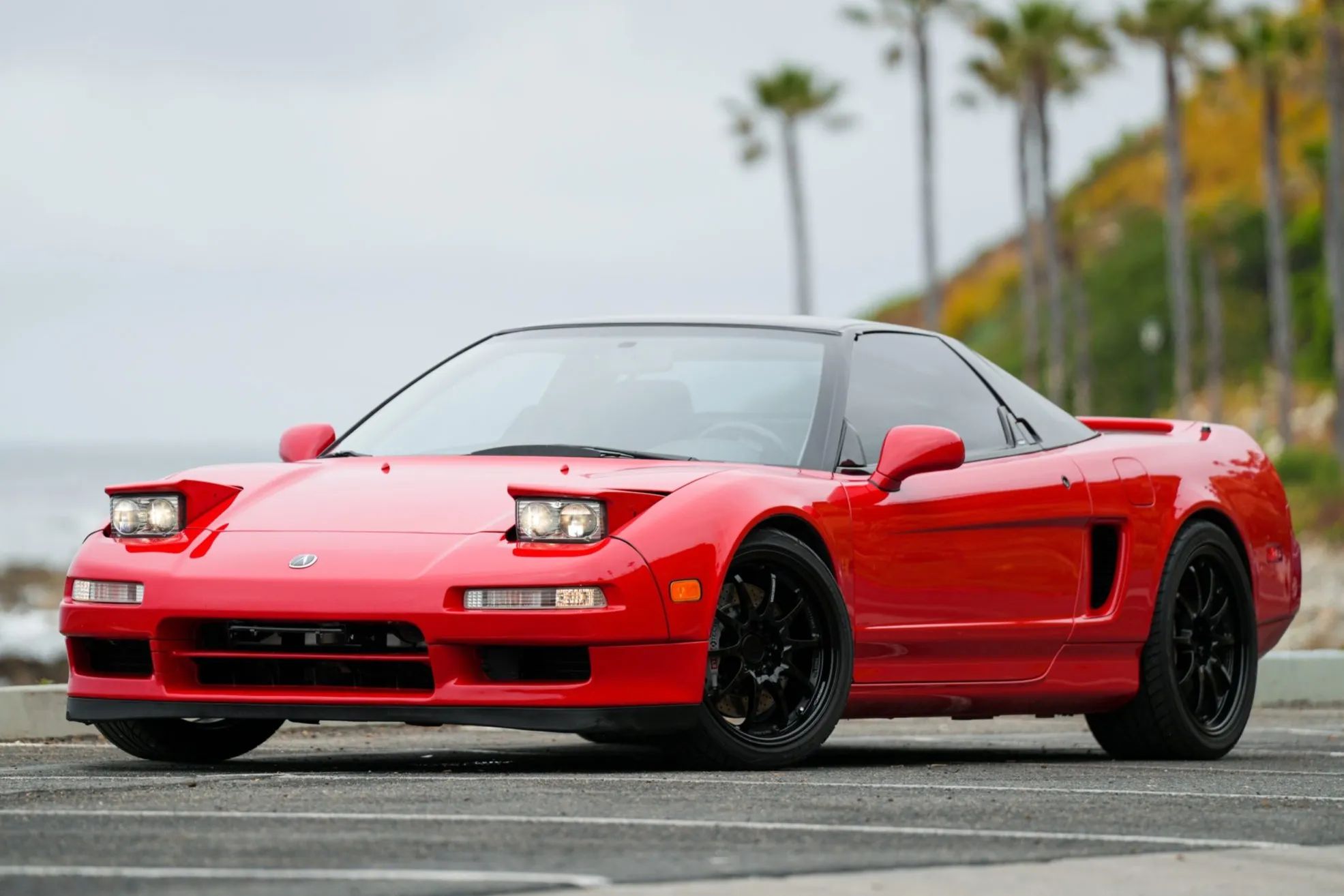
12. **Acura NSX**Acura’s NSX, a groundbreaking hybrid supercar, redefined performance by seamlessly integrating a sophisticated hybrid powertrain with sharp handling and an exotic design. It represented a significant leap for the Acura brand into the realm of modern performance vehicles, showcasing innovative engineering and a commitment to pushing technological boundaries. The NSX offered a unique driving proposition, blending everyday usability with supercar capabilities, all while leveraging advanced hybrid technology.
However, the pace of technological advancement in the high-performance electric vehicle sector has been exceptionally rapid. While the NSX was a pioneer, its hybrid technology has, in certain respects, been surpassed by newer, fully electric advances that offer even greater performance and efficiency. Consequently, Acura has chosen to discontinue the NSX to focus its resources and efforts on developing a new generation of high-performance electric models, reflecting a forward-looking strategy that embraces the future of automotive power.
Acura’s decision to retire the NSX, though perhaps bittersweet for fans, unequivocally underscores the brand’s commitment to continuous innovation within the electric performance space. It signifies a strategic pivot toward leveraging the latest advancements in electric propulsion to deliver the next iteration of thrilling, high-performance vehicles. The NSX’s legacy as a trailblazer will endure, serving as a testament to Acura’s willingness to experiment and evolve in pursuit of automotive excellence.
Car Model Information: 1992 Acura NSX Base
Name: Honda NSX
Caption: Acura NSX (first generation, NA2) along with some NA1 NSX cars
Manufacturer: Honda
Aka: Acura NSX (North America)
Production: 1990–2006 (NA1/2),2016–2022 (NC1/2)
Class: Sports car
ModelYears: 1991–2006,2017–2023
Categories: 2000s cars, 2010s cars, 2020s cars, 24 Hours of Le Mans race cars, All-wheel-drive vehicles
Summary: The Honda NSX, marketed in North America as the Acura NSX, is a two-seater, rear mid-engined, rear-wheel drive sports car manufactured by Honda.
The origins of the NSX trace back to 1984, with the HP-X (Honda Pininfarina eXperimental) concept, for a 3.0 L (180 cu in) V6 rear mid-engine, rear-wheel drive sports car. Honda, with the intention of meeting or exceeding the performance of the then V8 engine Ferrari range, committed to the project, aiming at both reliability and a lower price. The concept evolved and had its name changed to NS-X, which stood for “New”, “Sportscar” “eXperimental”, although the production model launched as the NSX.
Get more information about: Honda NSX
Buying a high-performing used car >>>
Brand: Acura Model: NSX
Price: $93,999 Mileage: 62,145 mi.
Read more about: Beyond Nostalgia: 12 Enduring Reasons Why Classic Cars Still Outshine Modern Vehicles for True Enthusiasts

13. **Audi A1 Sportback**The Audi A1 Sportback, positioned as one of the brand’s most compact and arguably most accessible models, offered a compelling blend of upscale feel and urban practicality. It successfully carved out a unique niche as a premium urban hatchback, providing discerning drivers with Audi’s signature design cues, interior refinement, and technological features in a more diminutive footprint. Its sharp styling and surprising sophistication for its size made it an attractive option for navigating congested city environments without compromising on luxury.
Unfortunately, the business realities of automotive manufacturing, particularly in the premium segment, are increasingly challenging for smaller, lower-margin vehicles. Changing corporate priorities at Audi, coupled with continuously tightening emissions regulations across global markets, have made the continued production of the A1 Sportback financially unsustainable. Audi has formally confirmed that there will be no direct successor to the A1, signaling a strategic shift away from this segment.
Audi’s decision reflects a broader industry trend where manufacturers are concentrating resources on higher-margin vehicles, notably larger SUVs and an expanding portfolio of electrified models. The A1 Sportback’s quiet exit as a well-crafted small car without a replacement underscores the ongoing transformation of product lineups. It signifies that even premium brands are making difficult choices to adapt to a market that increasingly favors more substantial, technologically advanced, and often electric vehicles, leaving less room for compact, internal combustion-powered offerings.
Car Model Information: 2019 Volvo XC90 T6 Inscription
Name: Audi A1
Caption: 2019 Audi A1 S Line 1.0 finished in yellow
Manufacturer: Audi AG
Production: 2010–present
Class: Supermini
Predecessor: Audi 50
Categories: 2020s cars, All-wheel-drive vehicles, All Wikipedia articles in need of updating, All Wikipedia articles written in British English, All articles that are excessively detailed
Summary: The Audi A1 is a luxury supermini car launched by Audi at the 2010 Geneva Motor Show. Sales of the initial three-door A1 model started in Germany in August 2010, with the United Kingdom following in November 2010. The five-door model marketed as the Sportback was launched in November 2011, with sales starting in export markets during early 2012. The second generation was released in 2019; the three-door hatchback model was discontinued in 2018 along with the first generation.
In February 2025, Volkswagen AG announced that the Audi A1, along with the Q2, would be discontinued after the model completes its current generation life cycle at the end of 2026 without a successor planned, due to poor sales and plans to shift Audi into selling larger premium crossovers and SUVs as well as all-electric models.
Get more information about: Audi A1
Buying a high-performing used car >>>
Brand: Audi Model: A1 Sportback
Price: $28,859 Mileage: 43,261 mi.
Read more about: 12 Luxury Sedans That Redefine Performance and Efficiency: Exceeding 35 MPGe Combined
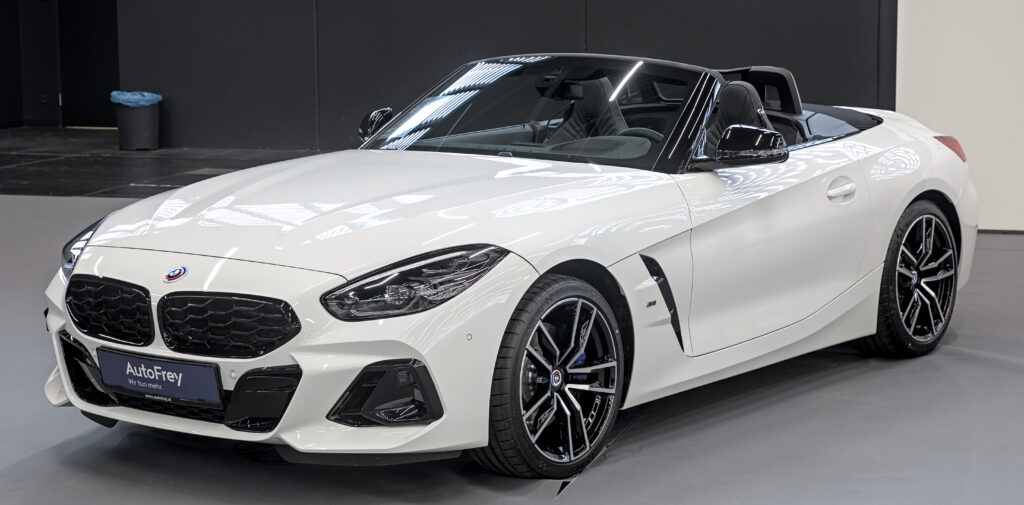
14. **BMW Z4**BMW’s Z4 roadster has long embodied the classic spirit of a two-seat convertible, celebrated for its engaging driving dynamics, balanced chassis, and a direct connection to BMW’s rich heritage of sports car manufacturing. It offered a pure, open-top driving experience, combining exhilarating performance with the sophisticated design cues characteristic of the Bavarian marque. For enthusiasts seeking a blend of agility, style, and the thrill of the open road, the Z4 represented an enduring and attractive proposition within the luxury segment.
However, market demand for traditional two-seat roadsters has been in decline globally, a trend that is increasingly influencing manufacturers’ product strategies. Whispers and credible reports suggest that BMW is evaluating the future of the Z4, with a potential discontinuation by 2027. This aligns with BMW’s overarching strategic pivot towards an intensified focus on electrification and the expansion of its ‘i’ sub-brand, which is dedicated to all-electric vehicles. Resources are being reallocated to develop more mainstream, higher-volume electric models.
The potential departure of the BMW Z4 symbolizes the end of an era for a specific type of driving experience—one characterized by a conventional internal combustion engine and a focus on pure, unfettered roadster enjoyment. Its discontinuation would reflect the growing dominance of SUVs and electric vehicles, which now capture a significantly larger share of the luxury market. While a future electric roadster from BMW is not entirely out of the question, the Z4, as we know it, appears to be nearing its final curtain call, marking another significant shift in BMW’s evolving lineup.
Car Model Information: 2007 BMW Z4 3.0si Roadster
Name: BMW Z
Production: nobr,nobr
Caption: 2021 BMW Z4 M40i
Class: Sports car
BodyStyle: roadster (automobile),coupé
Layout: Rear-wheel drive
Categories: All articles with dead external links, Articles with dead external links from July 2025, Articles with dead external links from October 2019, Articles with permanently dead external links, Articles with short description
Summary: The BMW Z models are a line of roadsters manufactured by German automaker BMW. The Z stands for Zukunft (German for future), and has been produced in four different series with six generations consisting of roadster, coupé, sports car, and concept variants.
The introduction of the M Coupé and M Roadster in the Z3 line marked the first of the Z series to have a high-performance BMW M variant. The first generation Z4 also continued to offer M Coupé and M Roadster variants. The current Z4 (G29) uses BMW’s (B58B30) inline-six, its platform is the basis for the current Toyota Supra.
Get more information about: BMW Z
Buying a high-performing used car >>>
Brand: BMW Model: Z4
Price: $16,000 Mileage: 45,889 mi.
Read more about: Maximizing Your Investment: A Kelley Blue Book Deep Dive into Which Used Cars Hold Their Value Best in 2025
The quiet exits of these luxury vehicles underscore a significant and accelerating realignment within the automotive industry. Whether driven by the inexorable march toward electrification, the surging popularity of SUVs, or evolving economic realities, the landscape of high-end motoring is being fundamentally reshaped. These models, once celebrated for their distinct character, engineering prowess, and design, are making way for a future where innovation and sustainability are paramount. For enthusiasts and collectors, this period represents both a farewell to cherished icons and an opportunity to witness history in the making. The shift is not merely about changing models; it’s about a complete redefinition of what luxury means on four wheels, promising a new generation of vehicles that blend advanced technology with environmental consciousness, even if it means bidding adieu to some truly magnificent machines.

